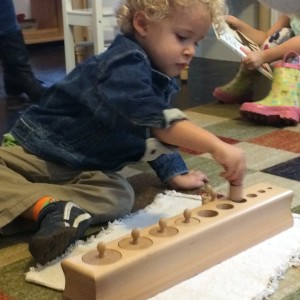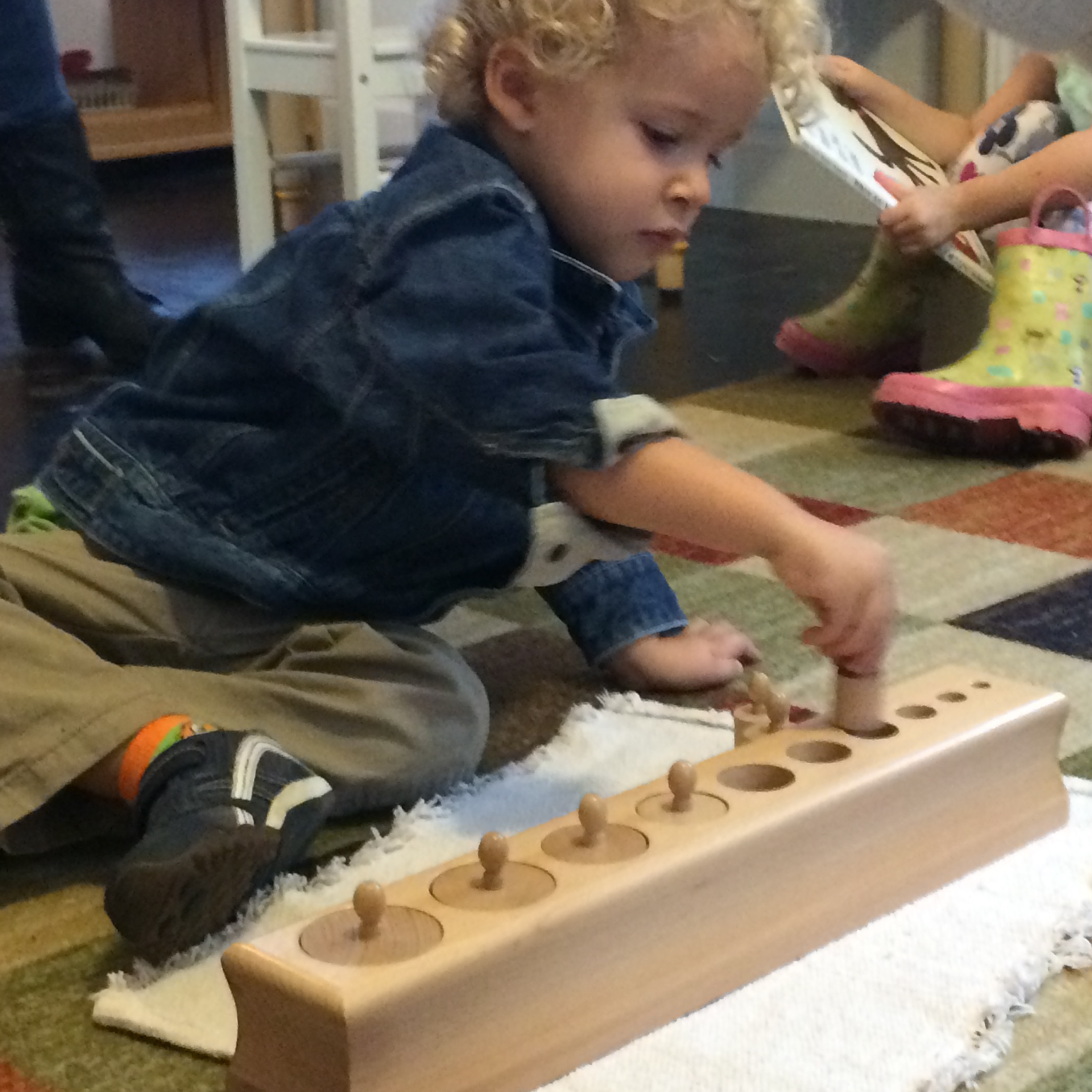 An often overlooked aspect of the Montessori Method is the control of error built into many Montessori works. The design of the work is such that the child learns from their mistakes. By so doing, the child must work through corrections until success is achieved. After repetition of these tasks, the young child is able to learn that mistakes are our friends. We learn from them, and move on. Many of us adults need those lessons!
An often overlooked aspect of the Montessori Method is the control of error built into many Montessori works. The design of the work is such that the child learns from their mistakes. By so doing, the child must work through corrections until success is achieved. After repetition of these tasks, the young child is able to learn that mistakes are our friends. We learn from them, and move on. Many of us adults need those lessons!
This is may be best exemplified in the classic Montessori work, the knobbed cylinders (pictured on this page). “A young child takes ten cylinders out of a wooden case; the cylinders vary in height and diameter,” writes Tim Seldin in The Montessori Way. “The control of error lies in the construction of the objects: a cylinder can only fit into one place in the wooden case.”
In so doing, the child learns that it is OK to make mistakes. Carol Dweck emphasizes the importance of this in her 2007 book, Mindsets. By working through mistakes, one grows and grows, what Dr. Dweck calls a “growth mindset.” The alternative is letting the mistakes dominate you and falling into a “fixed mindset” in which learning and growth are not just less likely to occur, but may regress.
The growth mindset instilled in our Montessori pre-schoolers will set them up for success at all levels of their future education, and into adulthood.

